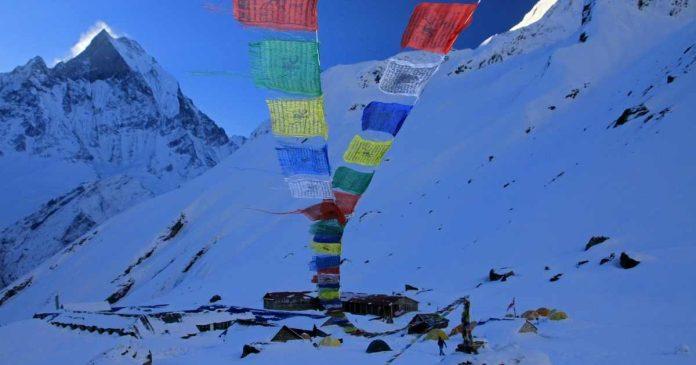Annapurna Circuit Trek is one of the most popular treks in the Himalayas, attracting thousands of adventure seekers every year. This trek is famous for its stunning scenery, diverse cultures, and challenging trails. However, it is also known for its difficulty level, which can be daunting for some trekkers. In this article, we will discuss how difficult Annapurna Circuit Trek is and what you need to know before embarking on this adventure.
The Route Annapurna Circuit Trek is a circular route that starts and ends in Besisahar. The trek takes you through a variety of landscapes, from lush forests and terraced farmlands to barren high-altitude deserts. You will cross the Thorong La Pass, which is the highest point of the trek at an altitude of 5,416 meters. The total distance of the trek is around 160-230 km, depending on the route you take, and takes approximately 15-21 days to complete.
Physical Fitness Requirements
Annapurna Circuit Trek is a challenging trek that requires a high level of physical fitness. The trek involves steep ascents and descents, often on narrow and rocky trails. You will be walking for several hours every day, sometimes at high altitudes. Therefore, it is crucial to prepare yourself physically and mentally before the trek. Regular exercise, such as hiking, jogging, and cycling, can help improve your endurance and stamina.
Altitude Sickness Altitude
sickness is a common problem that trekkers face during Annapurna Circuit Trek. This condition occurs when your body is unable to adjust to the low oxygen levels at high altitudes. Symptoms of altitude sickness include headache, nausea, dizziness, and fatigue. If left untreated, altitude sickness can be life-threatening. Therefore, it is essential to acclimatize properly and take necessary precautions, such as drinking plenty of water and avoiding alcohol.
Altitude Sickness
Altitude sickness is a common problem that trekkers face during Annapurna Circuit Trek. This condition occurs when your body is unable to adjust to the low oxygen levels at high altitudes. Symptoms of altitude sickness include headache, nausea, dizziness, and fatigue. If left untreated, altitude sickness can be life-threatening. Therefore, it is essential to acclimatize properly and take necessary precautions, such as drinking plenty of water and avoiding alcohol and sleeping pills. If you experience any symptoms of altitude sickness, you should descend to a lower altitude immediately and seek medical attention.
Weather and Seasons
The best time to do Annapurna Circuit Trek is during the autumn and spring seasons, from September to November and March to May respectively. During these seasons, the weather is generally clear and dry, and the temperatures are mild. However, during the monsoon season, from June to August, the trek can be very challenging due to heavy rains, landslides, and leeches. The winter season, from December to February, can also be difficult due to snow and cold temperatures.
Accommodations and Facilities
Annapurna Circuit Trek offers a variety of accommodations, ranging from basic tea houses to luxury lodges. The quality of accommodations varies, depending on the location and price. Basic tea houses offer a shared room with a common bathroom, while luxury lodges offer private rooms with attached bathrooms and hot showers. The cost of accommodations and food also varies, with prices increasing as you go higher in altitude.
Trekking Permits and Regulations To do Annapurna Circuit Trek, you need to obtain several permits, including the Annapurna Conservation Area Permit (ACAP) and the Trekker’s Information Management System (TIMS) card. These permits are required to enter the conservation area and are used to fund the conservation and development of the region. You should also follow the rules and regulations set by the conservation authorities, such as not littering and respecting the local culture and customs.
Challenges on the Trek
Annapurna Circuit Trek is a challenging trek that involves several obstacles, such as steep ascents and descents, narrow and rocky trails, river crossings, and landslides. Some sections of the trek can be dangerous, especially during the monsoon season. Therefore, it is crucial to hire a reliable guide and porter who can help you navigate through the obstacles and ensure your safety.
Hiring Guides and Porters Hiring a guide and porter is highly recommended for Annapurna Circuit Trek, especially if you are a first-time trekker or not familiar with the region. A guide can help you navigate through the trails, provide information about the local culture and history, and assist you in case of any emergencies. A porter can carry your backpack and other heavy equipment, allowing you to focus on the trek. The cost of hiring a guide and porter varies, depending on their experience and the duration of the trek.
Conclusion
Annapurna Circuit Trek is a challenging and rewarding adventure that requires proper preparation and planning. The trek offers stunning scenery, diverse cultures, and a sense of accomplishment. However, it also poses several challenges, such as altitude sickness, difficult terrain, and unpredictable weather. Therefore, it is essential to prepare yourself physically and mentally, hire a reliable guide and porter, and follow the rules and regulations set by the conservation authorities.
